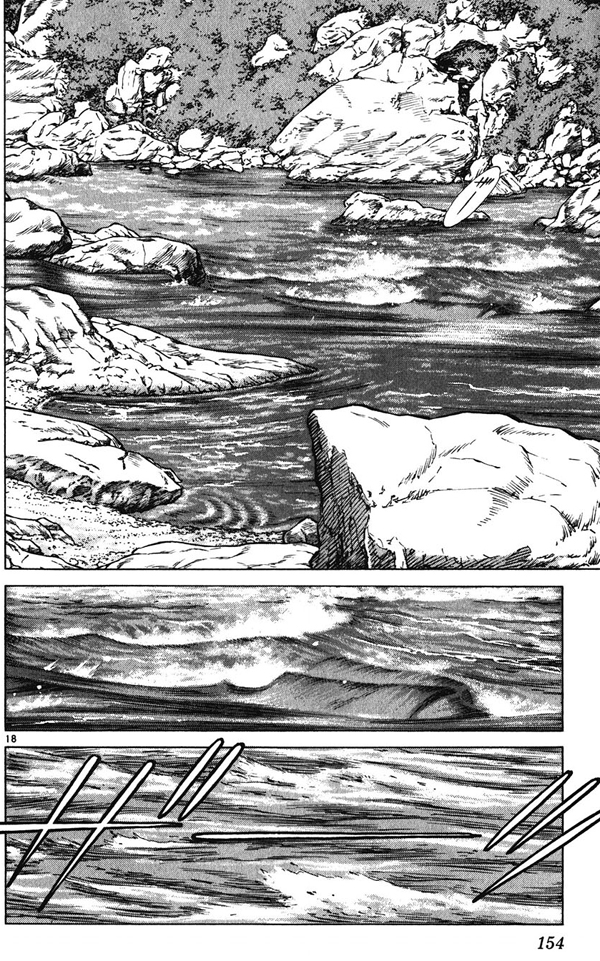The tale of Gen
In June 1973, Keiji Nakazawa gambled on a story that was published in a boy’s magazine named Weekly Boys’ Jump. At that time, comic book magazines became popular to young children as distribution moved from rented comics called akahon to these weekly serial magazines. (reference this) In Jump, he published what will become his life’s work, Hadashi no Gen (Barefoot Gen).
 Barefoot Gen centered on the story of a boy who lived in Hiroshima, Gen Nakaoka. His family faced great hardships as his father was opposed to the severe militarism that was present in Japanese society during the Pacific War. Gen and his siblings had to withstand bullying from other children while his parents had to bear the abuse of the Japanese officers that patrol their area. The Nakaokas were a persistent bunch and strove hard to make ends meet despite all their challenges. However, there was something greater looming over the skies.
Barefoot Gen centered on the story of a boy who lived in Hiroshima, Gen Nakaoka. His family faced great hardships as his father was opposed to the severe militarism that was present in Japanese society during the Pacific War. Gen and his siblings had to withstand bullying from other children while his parents had to bear the abuse of the Japanese officers that patrol their area. The Nakaokas were a persistent bunch and strove hard to make ends meet despite all their challenges. However, there was something greater looming over the skies.
Nakazawa dedicated the latter half of the first volume of his series to the nuclear bombing of Hiroshima. Like the event itself, he drew it quick and instantaneous however the horror that came after were burned in Nakazawa’s memory and was illustrated meticulously in Barefoot Gen. It was not the easiest of images to be seen in the comic and yet there he was sharing his memory of the Second World War to young boys. Towards later volumes, Nakazawa not only shared his memory of the war but also made Gen reflect on purpose of his actions – “I will make a painting that will bring peace to the world.â€[1]
Barefoot Gen may have been a fictional story but Nakazawa had stated that this was in many ways a memoir of his own experience as Hiroshima survivor. He was 6 yrs. old when he witnessed the atomic bombing in Hiroshima. His previous works prior to Barefoot Gen was a mix of science fiction and war drama – some of them laced with images of his own experience during the bombing. Prior to Gen, his story Struck by Black Rain was known for having a protagonist who killed Americans as revenge for his suffering during the atomic bombing. Unlike Gen, this story was more hardboiled and didn’t delve deeply into his own experience.
According to Kenji Kajiya, the strong imagery in Barefoot Gen greatly stirred the emotions of its readers. His first-person perspective panels gave the readers of the manga a first-hand view of the horrors of the bombing. This technique greatly stirred the emotions of its readers.[2]
The effect of Nakazawa’s technique eventually led to some complaints with regards to the gruesomeness of Gen. Parents complained about its harsh images and Nakazawa changed his artistic style however he felt constricted by them. He ended up loathing Gen and hid it in his drawer. Still, the reaction of the parents is a reminder of the power of Gen and how his gruesome images of the war solicited memories of the horrors of the war.[3]

Gen eventually moved to a different magazine as the series came to an end. In here, Nakazawa was able to write more of his memories in the past. His story has been retold as a movies and television specials that still aimed to remind people the horrors of nuclear fallout. A group of Japanese people named ‘Project Gen’ has used the comic to spread to the world the effects of the atomic bomb in Hiroshima. Gen was the first Japanese comic to be published in English. To this day, the comic still finds its relevance in Japan. In March 2012, the Board of Education has announced that they will use Barefoot Gen in Grade 3 elementary textbooks to impart lessons from the bombing to the younger generation.[4]
